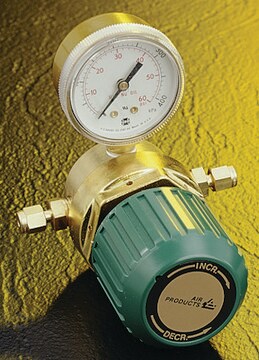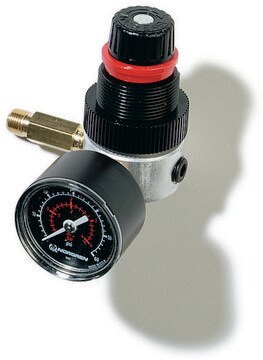一般說明
We are committed to bringing you greener alternative products, which adhere to one or more of The 12 Principles of Green Chemistry.This antibody is Preservative-free, produced without the harm or sacrifice of animals and exceptionally stable to allow for ambient shipping and storage if needed and thus aligns with "Waste Prevention", "Designing Safer Chemicals" and "Design for Energy Efficiency".
Click here for more information.
ZooMAb® antibodies represent an entirely new generation of recombinant monoclonal antibodies.Each ZooMAb® antibody is manufactured using our proprietary recombinant expression system, purified to homogeneity, and precisely dispensed to produce robust and highly reproducible lot-to-lot consistency. Only top-performing clones are released for use by researchers. Each antibody is validated for high specificity and affinity across multiple applications, including its most commonly used application. ZooMAb® antibodies are reliably available and ready to ship when you need them.
特異性
Clone 2H13 is a ZooMAb® Rabbit recombinant monoclonal antibody that specifically detects Transmembrane protein 206 (TMEM206). It targets an epitope within 24 amino acids from the N-terminal region.
免疫原
KLH-conjugated linear peptide corresponding to 24 amino acids from the N-terminal region of human Transmembrane protein 206 (TMEM206).
應用
Quality Control Testing
Evaluated by Western Blotting in Human brain tissue lysate.
Western Blotting Analysis: A 1:1,000 dilution of this antibody detected TMEM206 in Human brain tissue lysate.
Tested applications
Western Blotting Analysis: A 1:1,000 dilution from a representative lot detected TMEM206 in lysates from Mouse brain tissue and PC12 cells, and recombinant Human TMEM206 protein.
Enzyme Immunoassay Analysis (ELISA): Serial dilutions from a representative lot detected TMEM206 protein.
Affinity Binding Assay: A representative lot of this antibody bound TMEM206 peptide with a KD of 1.0 x 10-12 in an affinity binding assay.
Immunocytochemistry Analysis: A 1:100 dilution from a representative lot detected TMEM206 in HeLa, A431, and NIH 3T3 cells.
Note: Actual optimal working dilutions must be determined by end user as specimens, and experimental conditions may vary with the end user
Evaluated by Western Blotting in Human brain tissue lysate.
Western Blotting Analysis: A 1:1,000 dilution of this antibody detected TMEM206 in Human brain tissue lysate.
標靶描述
Proton-activated chloride channel (UniProt: Q9H813; also known as PAC, Transmembrane protein 206) is encoded by the PACC1 (also known as TMEM206) gene (Gene ID: 55248) in human. Chloride ions (Cl ) are the most abundant anions in animal cells and their movement across cell membrane is mediated by Cl channels and transporters, which are essential for several cellular functions, such as regulation of cell volume, acidification of intracellular vesicles, and excitability control in muscle cell. TMEM206 is an evolutionarily conserved, multi-pass membrane glycoprotein with two cytoplasmic domains, two transmembrane domains, and one extracellular domain. It is widely expressed, but its highest expression is observed in the brain. It is an essential component of the acid-sensitive outwardly rectifying (ASOR) anion channel that is involved in import of chloride ions in response to extracellular acidic pH. It is also involved in acidosis-induced cell death by mediating chloride influx and subsequent cell swelling. TMEM206 -/- cells exhibit partial protection from acid-induced cell death. Higher expression of TMEM206 has been observed in colorectal cancer (CRC), breast, and liver cancers. Overexpression of TMEM206 promotes proliferation and invasion in CRC cells and up-regulates the levels of phospho-AKT and its downstream signaling components. This ZooMAbZooMAb® recombinant monoclonal antibody, generated by our propriety technology, offers significantly enhanced specificity, affinity, reproducibility, and stability over conventional monoclonals. (Ref.: Deng, Z., et al. (2021). Science Adv. 7(9); eabe5983; Zhang, L., et al. (2020). Oncol. Lett. 5; 174; Ullrich, F., et al. (2019). eLife. 8; e49187).
外觀
Purified recombinant rabbit monoclonal antibody IgG, lyophilized in PBS, 5% Trehalose, normal appearance a coarse or translucent resin. The PBS/trehalose components in the ZooMAb formulation can have the appearance of a semi-solid (bead like gel) after lyophilization. This is a normal phenomenon. Please follow the recommended reconstitution procedure in the data sheet to dissolve the semi-solid, bead-like, gel-appearing material. The resulting antibody solution is completely stable and functional as proven by full functional testing. Contains no biocide or preservatives, such as azide, or any animal by-products. Larger pack sizes provided as multiples of 25 μL.
重構
300 μg/mL after reconstitution at 25 μL per vial. Please refer to guidance on suggested starting dilutions and/or titers per application and sample type.
儲存和穩定性
Recommend storage of lyophilized product at 2-8°C; Before reconstitution, micro-centrifuge vials briefly to spin down material to bottom of the vial; Reconstitute each vial by adding 25 μL of filtered lab grade water or PBS; Reconstituted antibodies can be stored at 2-8°C, or -20°C for long term storage. Avoid repeated freeze-thaws.
法律資訊
ZooMAb is a registered trademark of Merck KGaA, Darmstadt, Germany
免責聲明
Unless otherwise stated in our catalog or other company documentation accompanying the product(s), our products are intended for research use only and are not to be used for any other purpose, which includes but is not limited to, unauthorized commercial uses, in vitro diagnostic uses, ex vivo or in vivo therapeutic uses or any type of consumption or application to humans or animals.









